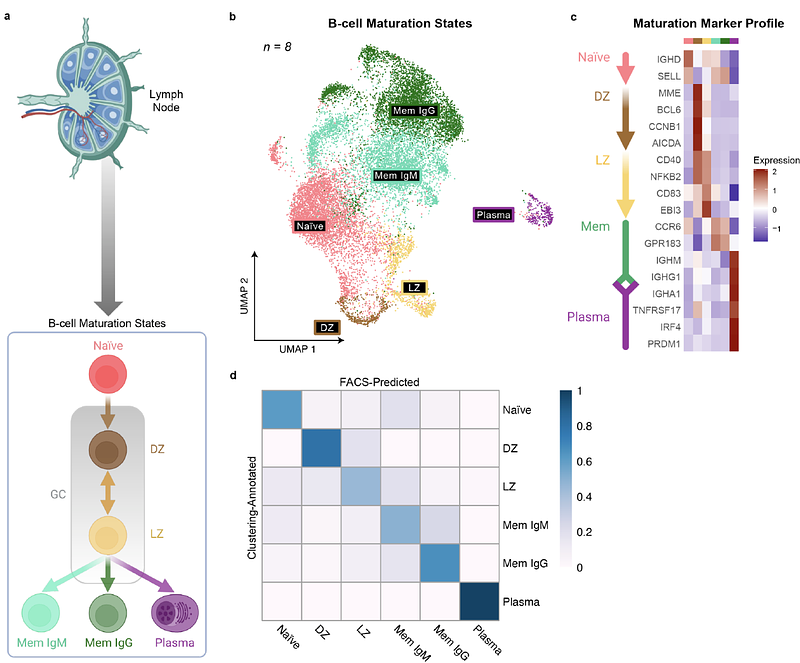A single-cell multi-omic and spatial atlas of nodal B-cell lymphomas reveals B-cell maturation drives intratumor heterogeneity

A single-cell multi-omic and spatial atlas of nodal B-cell lymphomas reveals B-cell maturation drives intratumor heterogeneity
Fitzgerald, D.; Roider, T.; Baertsch, M. A.; Kibler, A.; Horlova, A.; Chung, E. K.; Voehringer, H.; Mathioudaki, A.; Budeus, B.; Passerini, V.; Knoll, M.; Mammen, J.; Li, L.; Caille, L.; Czernilofsky, F.; Bruch, P. M.; Liebers, N.; Meyer-Bender, M.; Weigert, O.; Zaugg, J. B.; Nolan, G. P.; Seifert, M.; Huber, W.; Dietrich, S.
AbstractIntratumor heterogeneity is intrinsic to cancer pathogenesis and evolution, although little is known about how it relates to the differentiation trajectories of the tumor\'s cell-of-origin. Nodal B-cell non-Hodgkin lymphomas are a diverse set of cancers thought to originate from distinct stages of B-cell maturation. Through a single-cell multi-omic and spatial atlas of diffuse large B-cell, mantle cell, follicular, and marginal zone lymphomas along with reactive lymph nodes (n=51), we found multiple B-cell maturation states coexist within the same tumors. Intratumor maturation states emerged from the same cell-of-origin, revealing that maturation remains plastic in malignancy. The maturation state composition varied across entities and tumors, which included mixtures of cell-of-origin subtypes. Intratumor maturation states inhabited unique spatial niches, which typically retained their maturation-associated cellular interactions and regulatory networks. Intratumor maturation states showed distinct expression patterns of genetic variants, suggesting that maturation and genetic aberrations are intertwined. Our findings put forward a transformative model for cancer pathogenesis, where differentiation continues in malignancy and is central to tumor heterogeneity and evolution.